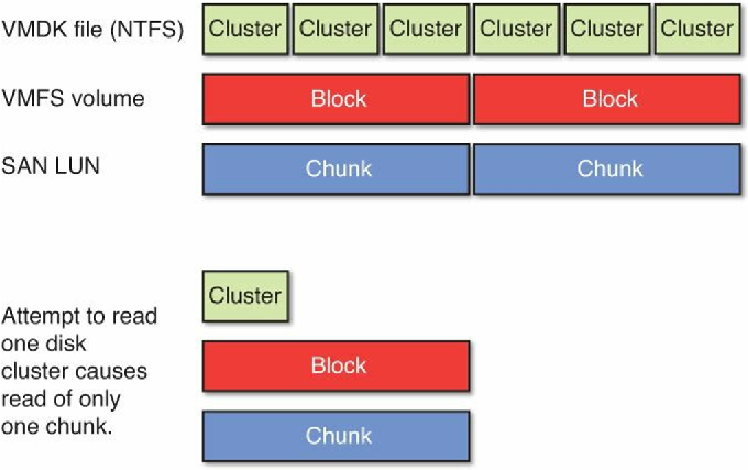Database Reference
In-Depth Information
Figure 6.9
File system and storage that is aligned.
SQL Server Buffer Pool Impact on Storage Performance
The Buffer Pool is a critical region of memory used in SQL Server, and it has a large
impact on storage performance. The important thing to note from a storage performance
perspective is that a larger Buffer Pool produces less read IO on your storage and lower
transaction latency at your database. The Buffer Pool is a big read cache for your
database. If you size it incorrectly or if the Buffer Pool is paged out by the operating
system, you will start to experience performance degradations and a large amount of
additional read IO hitting your storage. How the Buffer Pool is covered in detail in
virtualizing business critical databases.
Tip
There is a direct tradeoff between allocating more memory to the SQL Server
Database and its Buffer Pool to reduce read IO and allocating less memory and
having more read IO. For your design, you need to consider which resource will
be more of a constraint and a cost. In some situations, more memory for your
database and for your vSphere hosts could be cheaper than purchasing more
performance via your storage systems. However, server-side flash, which could
be thought of as cheap memory rather than expensive storage, combined with




